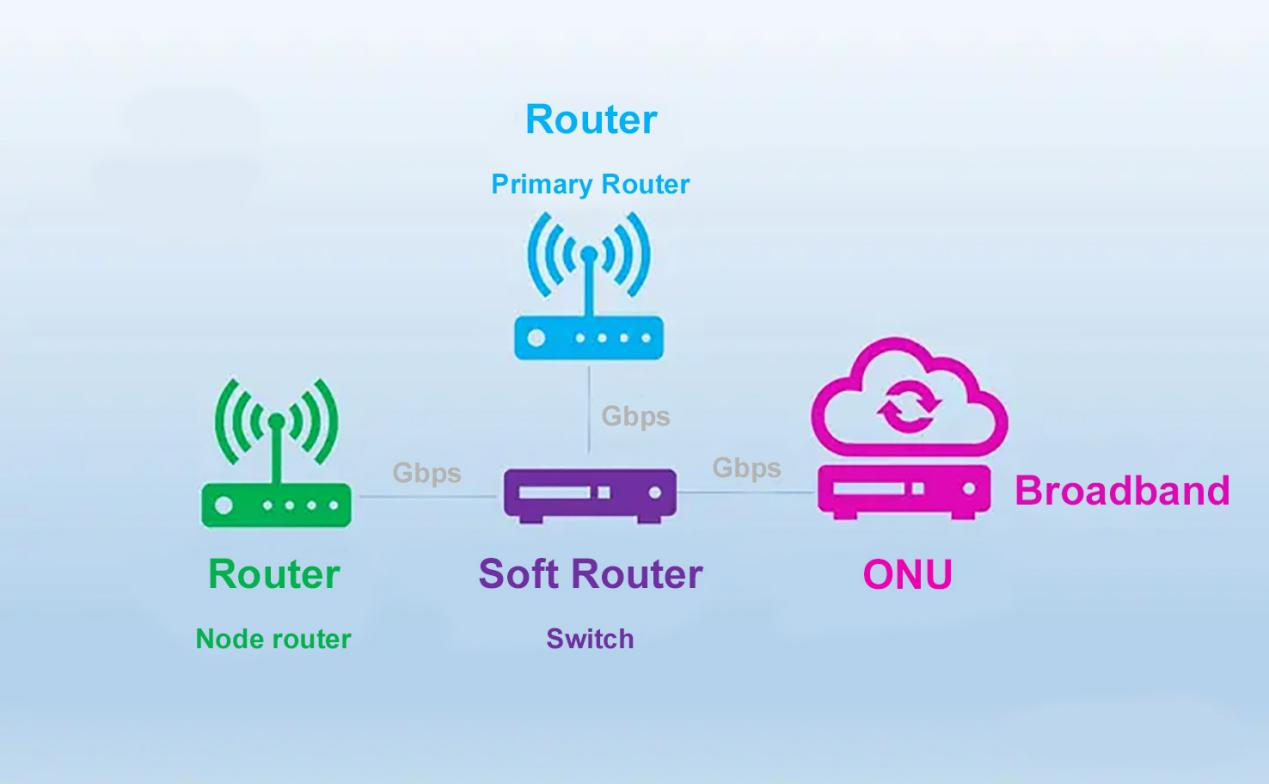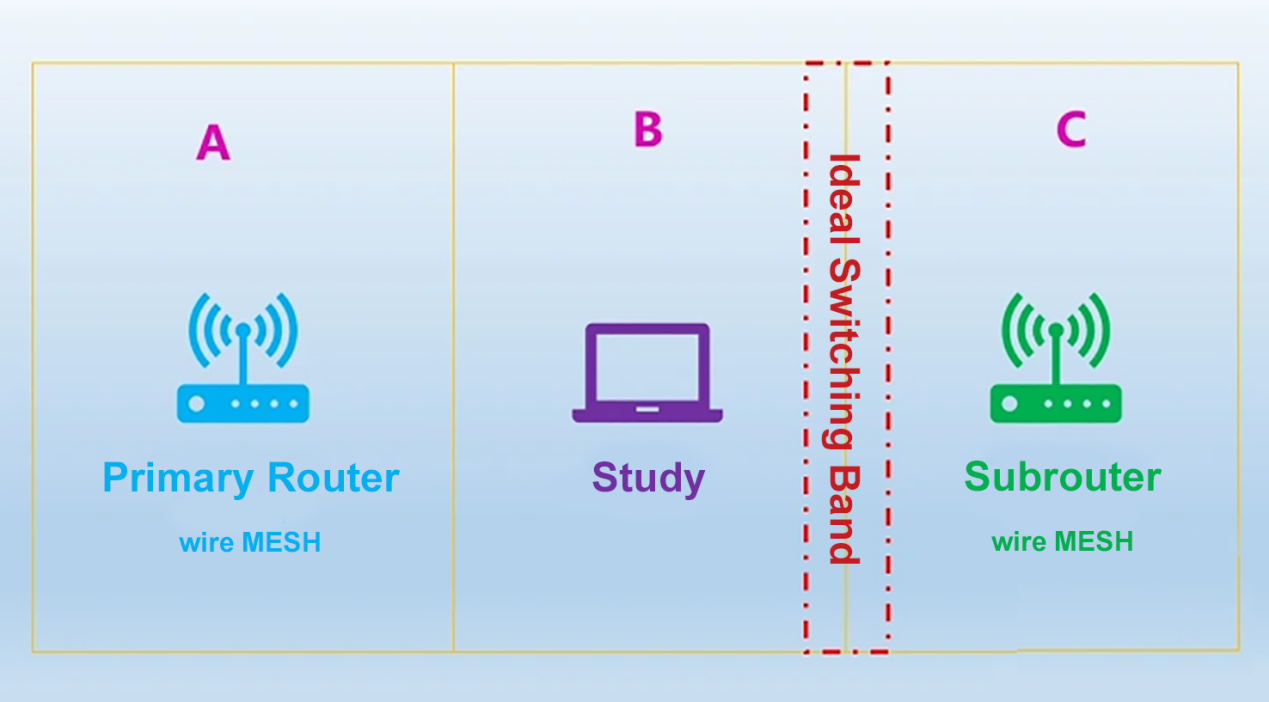Many people now use two routers to create a MESH network for seamless roaming. However, in reality, most of these MESH networks are incomplete. The difference between wireless MESH and wired MESH is significant, and if the switching band is not properly set up after MESH network creation, frequent switching issues might arise, particularly in the bedroom. Therefore, this guide will comprehensively explain MESH networking, including MESH network creation methods, switching band settings, roaming testing, and principles.
1. MESH Network Creation Methods
Wired MESH is the correct way to set up a MESH network. Wireless MESH networking is not recommended for dual-band routers, as the speed on the 5G frequency band will decrease by half, and latency will increase significantly.If no network cable is available, and a MESH network must be created, we strongly recommend using the LMAX3000 router from Limee.
Wired MESH network creation method 95% of routers on the market support router mode and AP mode under wired MESH networking. Router mode is suitable for use when the primary MESH router is connected to a bridge mode optical modem and dials up. Most router brands are the same, and MESH networking can be set up as long as the WAN port of the sub-router is connected to the LAN port of the main router (via an Ethernet switch, if necessary).
AP mode (wired relay) is suitable for situations where the optical modem is dialing up, or there is a soft router dialing up between the optical modem and the MESH router:
For most routers, when set to AP mode, the WAN port will become a LAN port, so at this time WAN/LAN can be blindly inserted. The connection between the main router and the sub-router can also be made via a switch or the LAN port of a soft router, and the effect is the same as directly connecting the two routers with a network cable.
2. Mesh Switching Band Settings
After setting up the MESH network with routers, it is imperative to configure switching bands. Let’s take a look at an example:
The MESH routers are located in rooms A and C, with the study (room B) in between:
If the signal strength of the two routers in room B is around -65dBm due to the multipath effect, the signal will fluctuate. Mobile phones and laptops are likely to frequently switch between the two routers, which is commonly referred to as “Ping-Pong” switching in communication. The experience will be very poor if the switching band is not configured properly.
So how should the switching band be set up?
The principle is to set it up at the entrance of the room or at the junction of the living room and dining room. In general, it should not be set up in places where people regularly stay for a long time, such as the study and bedroom.
Switching between same frequency
Most routers do not allow users to configure MESH switching parameters, so the only thing we can do is adjust the router’s power output. When setting up the MESH, the main router should be determined first, covering most areas of the house, with the sub-router covering the edge rooms.
Therefore, the transmit power of the main router can be set to the wall-penetrating mode (generally over 250 mW), while the power of the sub-router can be adjusted to the standard or even energy-saving mode. In this way, the switching band will move to the junction of rooms B and C, which can greatly improve “Ping-Pong” switching.
Switching between different frequencies (dual-frequency combo)
There is another kind of switching, which is the switching between 2.4GHz and 5GHz frequencies on a single router. ASUS routers’ switching function called “Smart Connect,” while other routers’ called “Dual-band Combo” and “Spectrum Navigation.”
The dual-band combo function is useful for WIFI 4 and WIFI 5 because when the coverage of the 5G frequency band of the router is far below the 2.4G frequency band, and it’s recommended to be turned on to ensure continuous network access.
However, after the WIFI6 era, the power amplification of the radio frequency and FEM front-end chips has been greatly improved, and a single router can now cover an area of up to 100 square meters on the 5G frequency band. Therefore, it is strongly not recommended to enable the dual-band combo function.
Post time: Jun-06-2023








